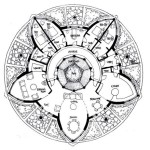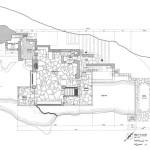Blue Bird House Plans: A Comprehensive Guide
Bluebirds, known for their vibrant plumage and cheerful song, are a welcome addition to any backyard. Attracting these beneficial birds requires providing suitable nesting environments. One of the most effective ways to do this is by installing a bluebird house. This article explores key considerations for selecting and implementing bluebird house plans, promoting successful nesting and fostering a thriving bluebird population.
Understanding Bluebird Nesting Requirements
Before constructing or purchasing a bluebird house, it is crucial to understand the specific needs of these cavity-nesting birds. Bluebirds are particular about the dimensions and location of their nesting sites, and failing to meet these requirements can deter them from using the house or, worse, create an unsafe environment for their young.
Eastern bluebirds, Western bluebirds, and Mountain bluebirds each have slightly different habitat preferences, but some fundamental needs are universal. These include a properly sized entrance hole, adequate ventilation and drainage, and protection from predators. The house should also be constructed from materials that provide insulation and structural integrity.
The size of the entrance hole is perhaps the most critical factor. A hole that is too large may allow larger, more aggressive birds, such as house sparrows, to enter and potentially harm or displace the bluebirds. A hole that is too small will prevent bluebirds from entering altogether. The ideal entrance hole size for Eastern bluebirds is 1.5 inches in diameter. Slightly larger holes may be suitable for Western and Mountain bluebirds, but maintaining a size close to 1.5 inches helps to deter unwanted competition.
Ventilation is essential to regulate the temperature inside the house, preventing overheating during hot weather and reducing condensation in colder periods. Small ventilation holes should be drilled near the top of the sides of the house. Drainage holes in the floor of the house prevent water from accumulating, which can lead to mold growth and other unsanitary conditions. A floor with slightly rounded corners also aids in drainage and cleaning.
Protection from predators is another critical aspect. The house should be designed to minimize access for predators such as raccoons, snakes, and cats. Mounting the house on a smooth metal pole with a baffle or cone can effectively prevent predators from climbing. The roof should overhang the entrance hole sufficiently to provide protection from rain and sun.
Essential Features of Effective Bluebird House Plans
Effective bluebird house plans incorporate several key features that contribute to the overall suitability of the nesting environment. These features are often overlooked in poorly designed houses but are essential for attracting bluebirds and ensuring their nesting success. These features also consider the ease of maintenance of the houses themselves, promoting better care taking of these installations.
The dimensions of the house are crucial. The floor of the house should be approximately 5x5 inches, and the height from the floor to the bottom of the entrance hole should be around 6 inches. This size provides ample space for the bluebirds to build their nest and raise their young without being overly spacious, which can make it harder for them to maintain a suitable temperature. The total height of the house, from the floor to the peak of the roof, should be approximately 9-10 inches.
The construction material is another key consideration. Untreated wood is the best option, as treated wood can leach chemicals that are harmful to bluebirds. Cedar, redwood, and pine are all suitable choices. The wood should be at least ¾ inch thick to provide adequate insulation. Avoid using plywood or other composite materials, as they can delaminate and deteriorate quickly.
The design of the roof is also important. The roof should be sloped to allow rainwater to run off easily. An overhanging roof provides additional protection from the elements. The roof should also be hinged or removable to allow for easy cleaning and monitoring of the nest.
A proper entrance hole is the key to attracting the right species and discouraging other more aggressive species. The entrance hole should be centered, and the bottom of the entrance hole should be approximately 6 inches above the floor of the house. This height prevents young birds from accidentally falling out of the nest before they are ready to fledge.
Internal features can also be beneficial. Some bluebird house plans include an interior ladder or textured surface to help fledglings climb to the entrance hole when they are ready to leave the nest. These features are not essential but can be helpful, especially in houses with smooth interior walls.
Selecting and Implementing Bluebird House Plans
Choosing the right bluebird house plan is only the first step. Proper placement and maintenance are equally important for attracting bluebirds and ensuring their continued success. Careful consideration should be given to the location of the house and the surrounding habitat.
Bluebirds prefer open areas with short grass and scattered trees or shrubs. They often perch on fences or wires to look for insects, which make up a large portion of their diet. Avoid placing the house in heavily wooded areas or areas with dense undergrowth. Bluebirds need to be able to easily forage for food and fly to and from the nest without obstruction.
The ideal location for a bluebird house is in a sunny spot, facing east or southeast. This orientation allows the house to warm up in the morning sun and provides protection from the harsh afternoon sun. Avoid placing the house in direct sunlight all day, as this can cause it to overheat.
Mounting the house on a smooth metal pole is the best way to deter predators. The pole should be at least 5 feet above the ground and should be equipped with a predator baffle or cone. Avoid mounting the house on a tree or a fence post, as these provide easy access for predators.
Spacing is another important factor to consider. Bluebirds are territorial and will defend their nesting territory from other bluebirds. Place bluebird houses at least 100 yards apart to minimize competition. If you are planning to install multiple houses, consider creating a bluebird trail, which is a series of houses spaced at regular intervals along a predetermined route.
Monitoring the bluebird house is essential for ensuring its continued success. Check the house regularly to remove any unwanted nests, such as those of house sparrows. House sparrows are aggressive birds that will compete with bluebirds for nesting sites and may even kill bluebird nestlings. Remove house sparrow nests immediately to give bluebirds a better chance of success.
Clean the bluebird house at least once a year, after the nesting season is over. Remove all nesting material and scrub the inside of the house with a mild bleach solution (1 part bleach to 9 parts water). Rinse the house thoroughly and allow it to dry completely before reinstalling it. Cleaning the house removes parasites and helps to prevent the spread of disease.
Repair any damage to the house as needed. Replace any broken or damaged parts to ensure that the house remains structurally sound and provides adequate protection for the bluebirds. Regularly check the predator baffle to make sure it is still effective. By following these guidelines, you can create a welcoming and safe environment for bluebirds and enjoy their beauty and song in your backyard.
By understanding bluebird nesting requirements, incorporating essential features into house plans, and implementing proper selection and maintenance strategies, individuals can contribute to the conservation of these beloved birds and enjoy the rewards of a thriving bluebird population in their community.

Eastern Bluebird Birdhouse 70birds Plans Index

Bluebird Birdhouse Plans Complete Step By Instructions For Building A Bird House

Blue Bird House Plans Print Release Woodworking Nestor For Eastern Birds Of Preservation Readi Bluebird

Western And Mountain Bluebird Birdhouse 70birds Plans Index

Peterson Bluebird Bird House Plans Kits

Free Bluebird House Plans Multiple Designs

Bluebird House Plans Free Construct101

Bluebird Bird House Plans Birdhousebuzz Com

How To Make A Diy Bluebird House Birds And Blooms

Eastern Bluebird Maryland S Wild Acres








